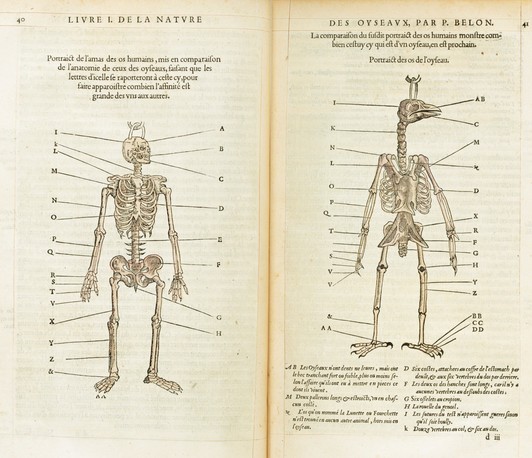Drawing Comparisons: Images in Comparative Anatomy, 1500–1900
Conference
- Public event without registration
- Data: 20.10.2023
- Ora: 10:30 - 18:00
- Relatore: Workshop
- Luogo: Villino Stroganoff, Via Gregoriana 22, 00187 Rome and online
- Contatto: katja.hackstein@biblhertz.it

Visual or formal analysis entails a search not only for forms but for likenesses. To look closely is, in other words, to look across. Anatomy, likewise, depends upon comparison. From Leonardo to Linnaeus, early modern anatomical knowledge materialized through bodies conceived as similar. The discipline of comparative anatomy emerged, specifically, as generalizations occurred across the human/nonhuman divide. The history of the anatomical image is also a history of violence, as those anatomical procedures allowing comparison (dissection and vivisection) often proceeded through the forceful manipulation, observation and depiction of the (non)human body.
Scholars from various disciplines (history of art, history of science and medicine, philosophy, fine arts, paleontology) will consider the use of images in generating comparison and in both formulating and challenging comparative anatomical knowledge.
Drawing
Comparisons: Images in Comparative Anatomy, 1500–1900
Program
Introduction
10:30–11:00 Alejandro Nodarse, Bibliotheca Hertziana / Harvard University: “A Guide to Looking Across”
Session One: Drawing Order
11:00–11:45 Martin Clayton, Royal Collection Trust, Windsor Castle: “‘Describe the jaw of a crocodile’: Leonardo da Vinci’s Animal Anatomies”
11:45–12:30 Katrina van Grouw, University of Cambridge: “Linnaeus Organized: Illustrating Convergence in Comparative Anatomy”
12:30–13:30 Lunch Break
Session Two: Languages of Likeness
13:30-14:15 Maria Conforti, Sapienza Università di Roma: “Fruits, Mushrooms, and Trees: Botanical Imagery in Early Modern Surgery and Anatomy”
14:15–15:00 Samir Boumediene, École Normale Supérieure de Lyon / Villa I Tatti: “Anatomies of Time: Looking at the Age of Things Through Layer Visualization”
15:00–15:30 Coffee Break
Session Three: Violence in the Comparative
15:30-16:15 Thomas Balfe, Courtauld Institute: “Skin Deep? Visualizing Human and Animal Violence in Early Modern Still Life Painting”
16:15-17:00 Rose Marie San Juan, University College London: “Anatomical Violence and the Pain of Resemblance”
17:00-17:15 Pause
Roundtable
17:15–18:00 Sietske Fransen, Bibliotheca Hertziana: Roundtable & Concluding Remarks
Participation online possible via Zoom: https://eu02web.zoom-x.de/meeting/register/u5AtfuCrqzopGdWQFrCgjtuas9uIWoIgB9YT
Scientific Organization: Alejandro Nodarse
Image: Homologous bones between a bird and a human. Pierre Belon, Natural History of Birds (L'Histoire de la nature des oyseaux, 1555), Image in Public Domain (Gallica).